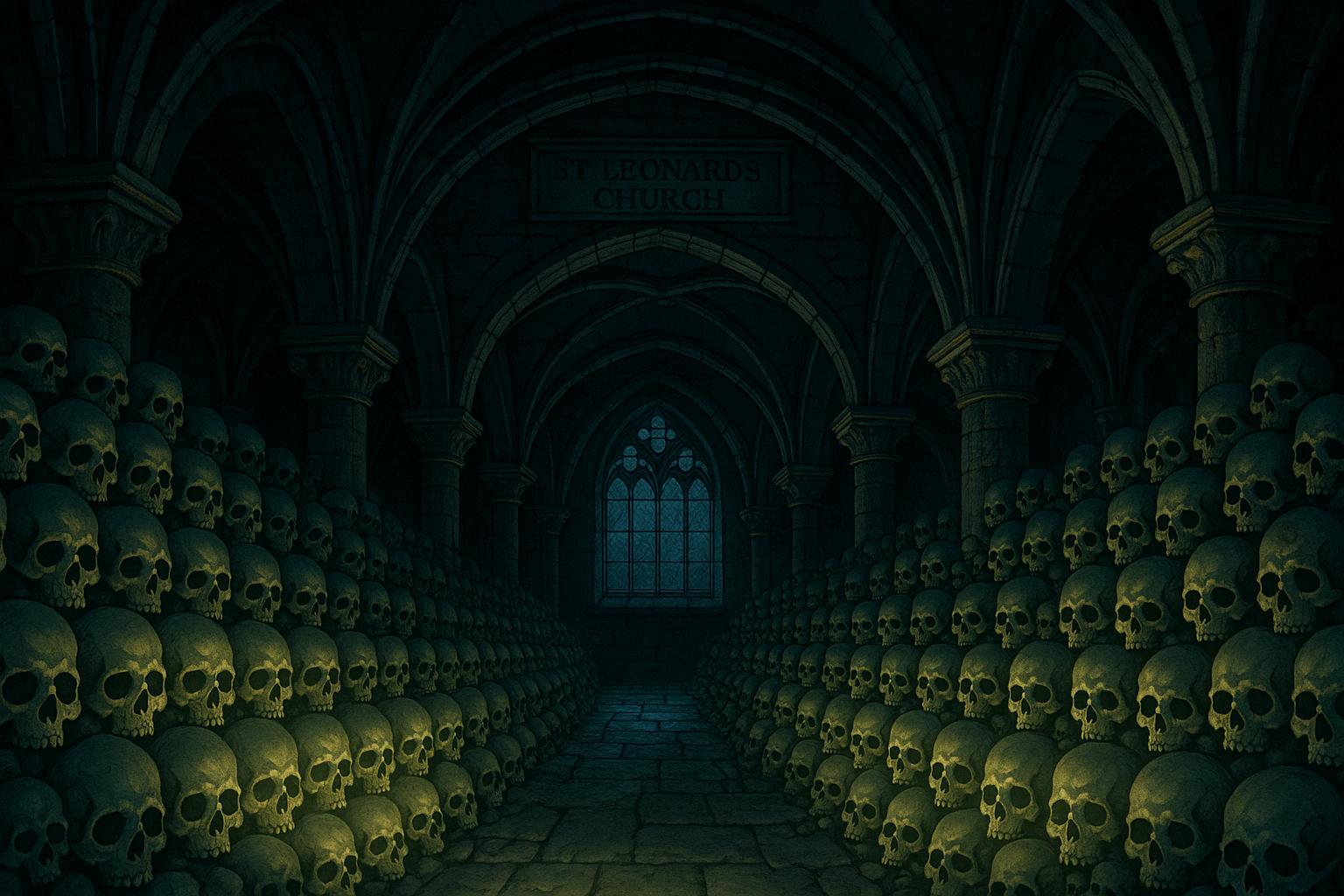St Leonard’s Church in Hythe, a seemingly unassuming edifice in Kent, offers an intriguing entry point into Britain’s complex intersection of history, culture, and ethics surrounding tourism. Founded in the 11th century and expanded during the 13th century, the church houses an eerie yet captivating crypt, home to what is regarded as one of the largest and best-preserved collections of ancient human remains in the United Kingdom. This ossuary, containing approximately 1,200 skulls, is believed to represent the remains of around 2,000 to 4,000 individuals, drawing not only history enthusiasts but also those intrigued by the macabre.
As tourism trends evolve, the ossuary has sparked a dialogue about cultural preservation and the ethical implications of viewing sacred spaces filled with human remains as mere spectacles. Visitors can enter this remarkable site for a modest fee of £5, or £1 for children, yet questions persist about the appropriateness of such encounters. In an age where modern travellers yearn for genuine experiences, balancing reverence for the deceased with a desire for educational engagement becomes increasingly vital.
The crypt's historical significance goes beyond its unsettling aesthetics. It serves as a focal point for questions about identity and the circumstances of those interred within. Initial records from 1678 by local historian Samuel Jeake refer to an “orderly pile of dead men’s bones,” but the reality may be richer and more complex than whispered folklore. Early theories suggested these bones belonged to Danish pirates or victims of pivotal events such as the Battle of Hastings, yet contemporary osteological research, particularly a 2009 project, casts doubt on these narratives. This study revealed that the majority of the remains were from women and children, shifting the focus from historical legends to a more nuanced understanding of gender and mortality in medieval society.
This evolving narrative not only challenges long-held beliefs but also reflects deeper issues regarding the interpretation of history across linguistic divides. Many international tourists, confronted with limited contextual information, struggle to grasp the sensitive nuances of the site’s history. The ossuary thus serves as a microcosm of a broader global conversation about how to convey complex historical narratives in ways that bridge cultural gaps. Destinations around the world, such as those in Macau and Guangzhou, have begun rethinking their approaches to multilingual tourism. St Leonard’s Church offers a stark contrast, highlighting the urgent need for effective storytelling and inclusive explanations to facilitate understanding among diverse visitors.
With the crypt scheduled to open from 1 to 30 September 2025, there are significant logistical considerations surrounding access to this haunting space. Operating hours—as well as the limited availability during the off-peak season—underscore the potential barriers for tourists, particularly those from non-English speaking backgrounds. While the church's historical allure promises a gripping experience, the realities of seasonal accessibility may simultaneously hinder engagement from eager travellers.
Ultimately, St Leonard’s Church is not merely a repository of human remains, but rather a profound site for reflection on how we interpret, present, and engage with history. It invites visitors to consider how sacred heritage sites should be treated in an age of global travel, where cultural sensitivity and ethical storytelling are paramount. As notions of heritage tourism continue to shift, this ancient sanctuary stands as both a relic of the past and a catalyst for future conversations about our collective narrative.
Reference Map
- Paragraph 1: [1], [3]
- Paragraph 2: [1], [4]
- Paragraph 3: [1], [5]
- Paragraph 4: [1], [2], [3]
- Paragraph 5: [2], [5]
- Paragraph 6: [1], [3]
- Paragraph 7: [1], [4], [5]
Source: Noah Wire Services
